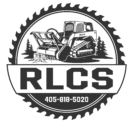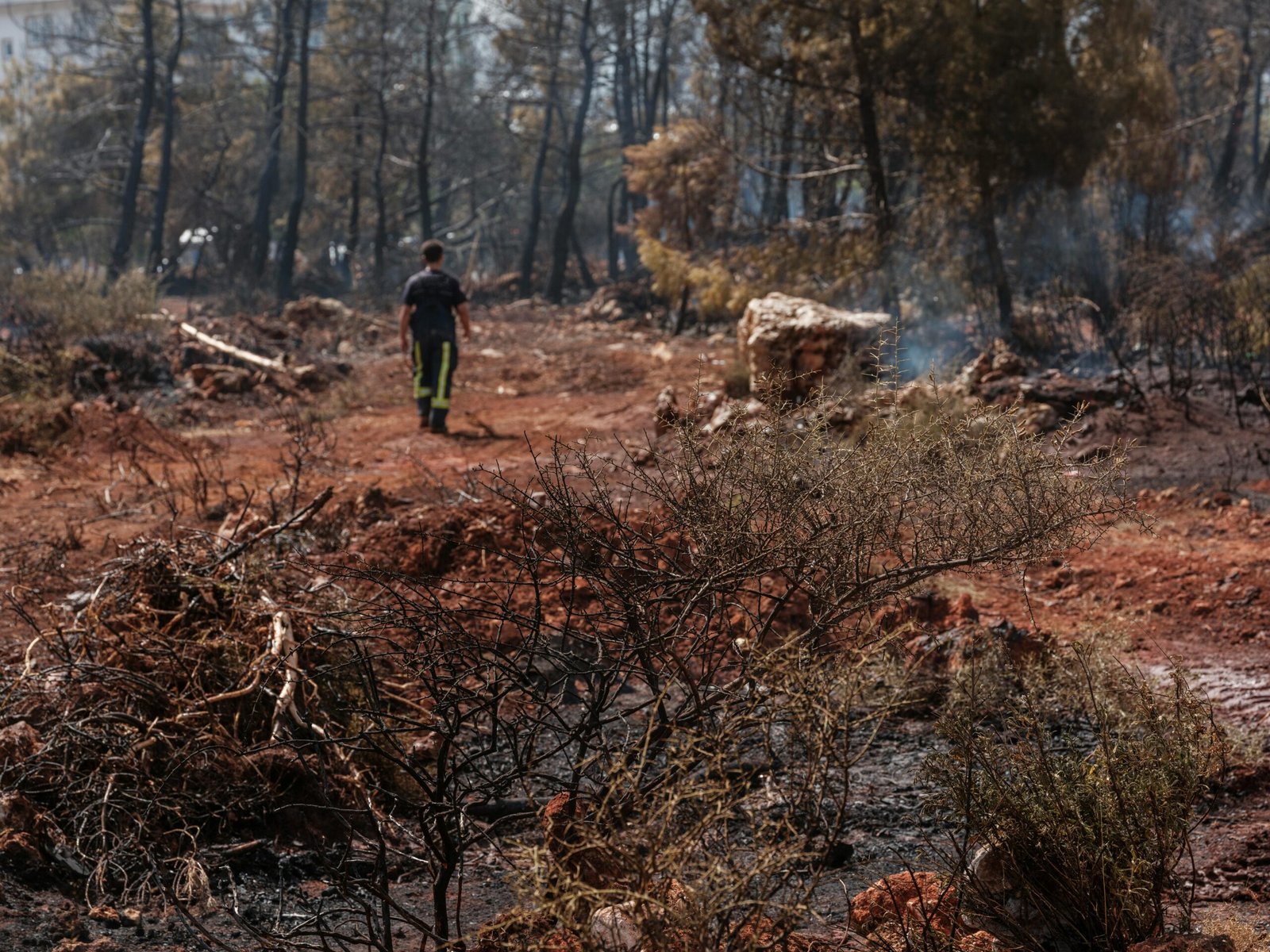Wildfires threaten communities, wildlife, and ecosystems, particularly in rural and forested areas of Oklahoma. With increasingly dry conditions, unmanaged vegetation can quickly become fuel, leading to devastating fires that spread rapidly and cause significant damage.
Proactive land clearing has emerged as one of the most effective strategies for wildfire prevention and management, helping reduce the risk of fires before they start. Land clearing creates defensible spaces that protect properties and lives by removing excess brush, dead trees, and other combustible materials. This article explores the critical role of land clearing in wildfire prevention, particularly in Oklahoma, and outlines best practices for maintaining fire-safe landscapes.
Understanding Wildfire Risks in Oklahoma
Oklahoma’s diverse landscape, which includes grasslands, forests, and rural areas, makes it highly susceptible to wildfires. The state experiences hot, dry summers and periodic droughts, creating the perfect conditions for wildfires to ignite and spread. Factors like high winds, dry vegetation, and human activities such as burning debris or discarding cigarettes can easily trigger fires that can devastate vast areas quickly.
In recent years, Oklahoma has seen an increase in wildfire incidents, affecting both urban and rural communities. These fires threaten homes and infrastructure and put firefighters and residents at risk. Effective wildfire prevention requires a proactive approach, with land clearing playing a pivotal role in mitigating fire hazards before they escalate.
The Importance of Land Clearing for Fire Safety
Land clearing is a vital component of wildfire prevention and management, helping to reduce the amount of combustible material available to fuel fires. By strategically removing vegetation, deadwood, and other flammable debris, land clearing creates buffer zones known as defensible spaces. These cleared areas act as barriers that slow the spread of fire, providing a safer environment for firefighters to defend properties and reducing the overall intensity of wildfires.
Creating Defensible Space: The First Line of Defense
Defensible space refers to the cleared area around a structure or property designed to slow the spread of fire and provide a safe zone for fire suppression efforts. The concept of defensible space is based on strategic vegetation management, where flammable materials are reduced or removed to create a buffer between the building and the surrounding landscape.
Zone 1: Immediate Zone (0-5 feet from structures)
The immediate zone is the first five feet surrounding a structure and is the most critical area for fire safety. In this zone, all flammable materials, including dead leaves, pine needles, and wooden mulch, should be removed. Vegetation should be kept to a minimum, and non-combustible materials such as gravel, concrete, or stone are recommended for landscaping.
Maintaining this zone helps prevent flames or embers from reaching your home or building, reducing the risk of ignition. Regular maintenance, such as cleaning gutters and removing dead plants, is essential for keeping this area safe.
Zone 2: Intermediate Zone (5-30 feet from structures)
The intermediate zone extends from five to thirty feet around the structure and is designed to reduce fire intensity and provide a protective buffer. Vegetation in this area should be carefully managed to reduce fuel loads. Trees should be spaced apart, with lower branches pruned to a height of at least six to ten feet above the ground to prevent the spread of ground fires into tree canopies.
En branches and dry brush igniting quickly are essential in this zone. Incorporating fire-resistant plants and maintaining adequate spacing between shrubs and trees should be removed to help reduce fire risk further.
Zone 3: Extended Zone (30-100 feet from structures)
The extended zone, which spans from thirty to one hundred feet around a structure, focuses on reducing the spread of wildfires by limiting the continuity of fuels. In this zone, dead vegetation should be removed regularly, and trees should be thinned to prevent crown fires. The goal is to slow the fire’s progression and keep it away from buildings, providing additional time for firefighting efforts.
Creating and maintaining these defensible spaces through strategic land clearing significantly enhances fire safety, making it one of the most effective wildfire prevention measures available today for protecting homes and communities.
Best Practices for Land Clearing in Wildfire Prevention
Proper land clearing requires careful planning and execution to reduce fire risks without causing unnecessary environmental damage. Here are some best practices for land clearing that promote fire safety while maintaining ecological balance.
1. Regular Maintenance and Brush Clearing
Regular land maintenance is essential to keeping fire hazards at bay. This includes routine brush clearing, tree trimming, and removing dead or overgrown vegetation. Brush clearing services in Oklahoma specialize in maintaining landscapes to reduce fire fuel, focusing on areas prone to heavy vegetation growth.
Maintaining your property seasonally ensures that fire risks are managed year-round. Removing accumulated debris, thinning dense brush, and mowing grasses can significantly lower the chances of a fire spreading rapidly.
2. Selective Thinning of Trees and Vegetation
Selective thinning involves removing specific trees and shrubs to decrease vegetation density, reducing the fuel available for fires. This practice helps prevent crown fires, which occur when flames travel from treetop to treetop. Thinning also improves air circulation, allowing vegetation to retain less moisture and reducing fire intensity.
When thinning trees, focus on first removing smaller, weaker, or dead trees while maintaining healthy, well-spaced trees. This reduces fire risk and promotes a healthier forest ecosystem by reducing competition for resources.
3. Creating Fuel Breaks
Fuel breaks are strips of land where vegetation has been removed or thinned to slow the advance of a wildfire. These breaks act as barriers that disrupt the fire’s path, making it easier for firefighters to control the blaze. Fuel breaks can be natural (rivers, roads) or man-made (cleared strips, mowed areas).
In Oklahoma, creating fuel breaks around properties, along driveways, and around large vegetation clusters can provide a critical line of defense against advancing wildfires. Fuel breaks should be wide enough to separate areas of dense vegetation effectively and should be maintained regularly to remain effective.
4. Mulching and Ground Cover Management
Mulching is a popular land-clearing method that shreds vegetation into mulch and leaves it on the ground. While mulching can benefit soil health, managing mulch depth is essential to prevent it from becoming a fire hazard. Mulch layers should be kept at a depth of two to three inches and regularly monitored for dryness during fire season.
Using non-combustible ground covers, such as gravel or stones, near structures and in defensible spaces can further reduce the fire risk. Avoid using flammable materials like pine bark or wood chips close to buildings, as these can ignite quickly if exposed to embers.
5. Collaborating with Professional Brush Clearing Services
Professional brush-clearing services in Oklahoma provide expertise and equipment that make land clearing safer, more efficient, and more effective. These services can handle everything from small residential lots to large-scale agricultural or commercial properties, tailoring their approach to the specific needs of each site.
Professionals are trained to assess fire risks, develop defensible space plans, and execute clearing projects that comply with local fire safety regulations. Hiring experienced brush clearing services ensures your property is prepared to withstand wildfire threats, giving you peace of mind during fire season.
Environmental Considerations in Land Clearing for Wildfire Prevention
While land clearing is essential for fire safety, clearing efforts must be balanced with environmental considerations. Over-clearing can lead to soil erosion, habitat destruction, and negative impacts on water quality. Therefore, sustainable land-clearing practices that protect natural resources while enhancing fire safety are crucial.
Protecting Native Vegetation and Wildlife
Selective clearing allows for removing fire-prone species while preserving native vegetation that is less likely to ignite. Maintaining native plants supports local wildlife habitats and helps prevent soil erosion, contributing to the ecosystem’s overall health.
Erosion Control Measures
When clearing vegetation, particularly on slopes, erosion control measures such as silt fences, wattles, or erosion blankets are essential. These measures help stabilize the soil and prevent sediment from washing into waterways, protecting water quality and reducing the impact of land clearing on the environment.
Minimizing Soil Disturbance
Minimizing soil disturbance during clearing helps maintain soil structure and health. Techniques like forestry mulching, which grinds vegetation in place without uprooting soil, help reduce the impact on the land while still achieving fire safety goals.
FAQs
Why is land clearing important for wildfire prevention?
Land clearing reduces the amount of combustible vegetation that can fuel wildfires, creating defensible spaces that slow fire spread and provide safer zones for firefighting efforts.
How often should land be cleared to maintain fire safety?
Land should be cleaned regularly, ideally seasonally, to manage brush and dead vegetation growth. Regular maintenance ensures that fire risks are minimized throughout the year.
What is the best way to create defensible space around my property?
The best way to create defensible space is by following the zone approach: clearing flammable materials close to structures, thinning vegetation further out, and maintaining a cleared area of at least 30 feet around buildings.
Can land clearing impact the environment negatively?
If not done correctly, land clearing can cause soil erosion, habitat loss, and water quality issues. Sustainable clearing methods, such as selective thinning and mulching, can help minimize these impacts.
Are professional brush-clearing services worth the investment?
Professional services bring expertise, equipment, and safety measures that ensure effective land clearing. They help property owners comply with fire safety regulations and provide a thorough approach to reducing wildfire risks.
What is the role of fuel breaks in wildfire prevention?
Fuel breaks disrupt the continuity of vegetation, slowing the spread of wildfires and providing firefighters with safer areas to control the blaze. They are a key component of fire management strategies.
Conclusion
Land clearing plays an indispensable role in wildfire prevention and management, particularly in Oklahoma’s fire-prone landscapes. Property owners can significantly reduce the risk of wildfires by creating defensible spaces, reducing fire fuels, and implementing best practices for brush clearing. Proactive land clearing protects homes and lives and contributes to the broader effort to manage and mitigate wildfires in vulnerable communities. For those living in fire-prone areas, investing in regular land clearing and professional brush clearing services is critical to achieving fire safety and resilience.



